As NYC moves forward with Chelsea plan, senior residents brace for relocation
June 19, 2025, 6:30 a.m.
NYCHA and a pair of developers are awaiting final approval from the federal government. After that, residents of a senior apartment building will have 90 days to move.
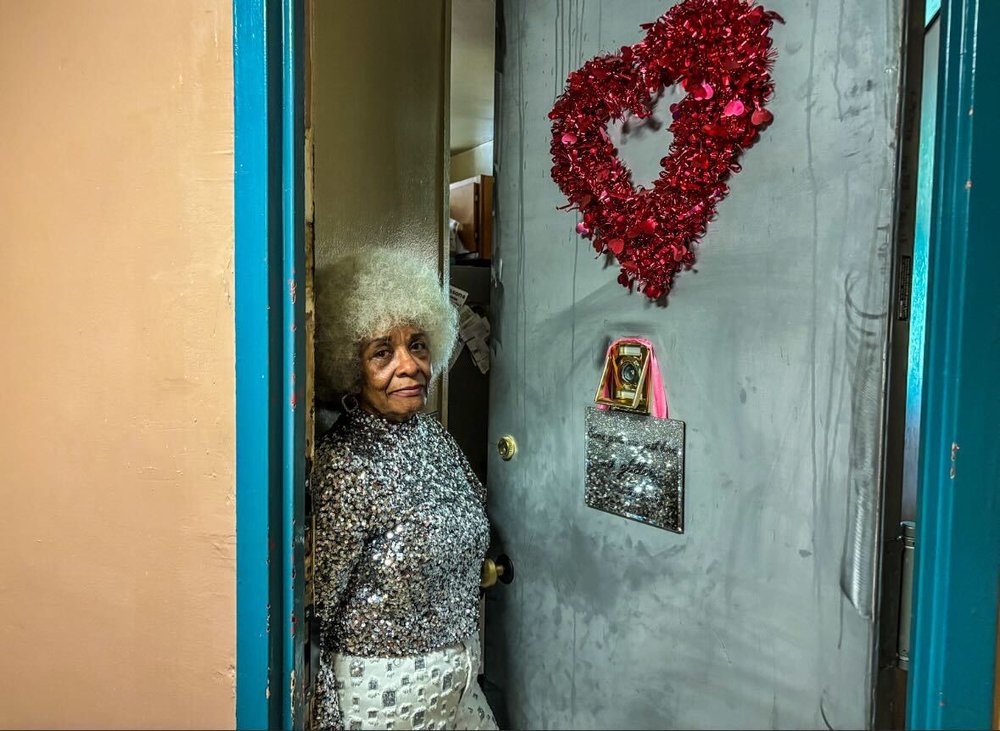
Mayor Eric Adams has called the redevelopment of two public housing complexes in Chelsea a “revolutionary” plan for the city, and many of the leading candidates vying to replace him support it as a model for the future.
If approved by the federal government as early as this summer, private developers would replace 18 poorly maintained New York City Housing Authority buildings — home to around 4,500 people in total — with brand new towers, while adding thousands of privately owned, market-rate units on the same publicly owned, and very valuable land.
NYCHA and the developers claim widespread support for the project among tenants at the Fulton and Elliott-Chelsea Houses. Most residents would get to stay in their apartments until new units are constructed over the next three years by two development firms, Related Companies and Essence.
But the first phase hinges on moving residents out of a building called Chelsea Addition on West 27th Street meant for seniors, and relocating them into other units on the campus so their homes can be demolished, potentially this fall. And many older adults say they don’t want to leave, voicing a deep-rooted skepticism of a redevelopment scheme they might not live long enough to see the end of, and of promises made by city leaders and a housing authority they no longer trust, or perhaps never did.
‘Stay here and fight’
Maria Santos glided through the hallways of Chelsea Addition in a silvery, sequined blouse with a skirt and shoes to match. She grew up in Williamsburg in the 1950s, but has been living in her apartment in Chelsea Addition for the last decade and said she has since come to be known as the “Queen of Chelsea” for her elegant style. Inside her apartment, she complained about broken flooring and unlocked mailboxes, but said she feels comfortable in her well-lit living room and in the quiet building.
“Nobody wants to move from here,” she said.
Officials from the development team and NYCHA are encouraging her and other residents in the building to pack up and relocate to “refurbished” apartments elsewhere in the public housing development.
The promise is that they’ll be able to move into new homes once they’re built, likely by the summer of 2029, according to a presentation from the development team earlier this month. And the housing authority and the developers have tried to assuage any concerns by offering tenants signed legal “right to return” agreements and guaranteeing there will be no changes to their current rent amounts.
But Santos and her neighbor Maria Christina Ember, 81, are hesitant.
“I don't know that my life and my health, that I can make the move,” Ember said.
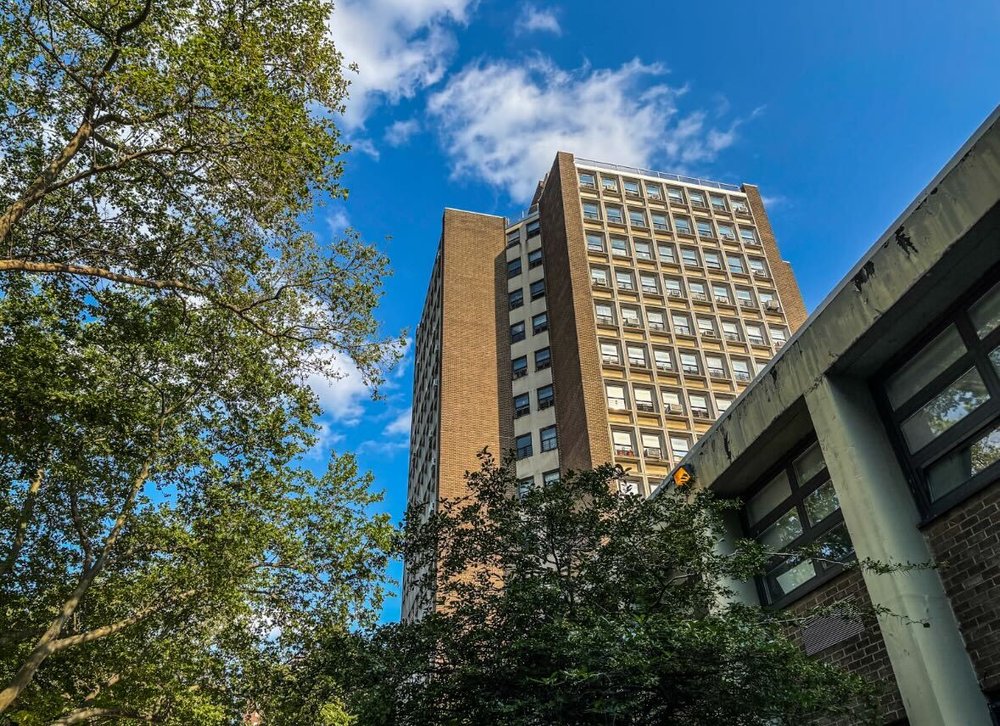
NYCHA has transferred more than 60 public housing sites to private managers and developers in recent years while also changing how those developments get their funding from the federal government. But the proposal to rebuild the Fulton and Chelsea-Elliott Houses and add thousands of new privately owned units is unlike anything the city has tried before.
Mayor Adams and other supporters say the plan guarantees apartments to existing residents, while pursuing the kind of “infill” development — building new housing on NYCHA campuses — needed to address the city’s broader housing crisis. The proposed project could create 3,454 new apartments, including 875 with rents priced for low- and middle-income tenants, in addition to the 2,050 replacement units for existing residents.
This thing should have already started.
Fulton Houses Tenant Association President Miguel Acevedo
Opponents argue that the city is giving away public land for private profit, and they fear the project won’t live up to its lofty vision.
“It’s terrible,” Ember said, gesturing to a sign hanging on the inside of her apartment door that read “Stop the Land Grab.”
Santos said she’s considered not complying with the request to leave because she doesn’t know where she’ll end up or think she would actually get a brand new apartment. All told, Gothamist spoke with a dozen tenants in the 85-unit development who felt the same.
“I’m a warrior,” Santos said. “I would stay here and fight.”
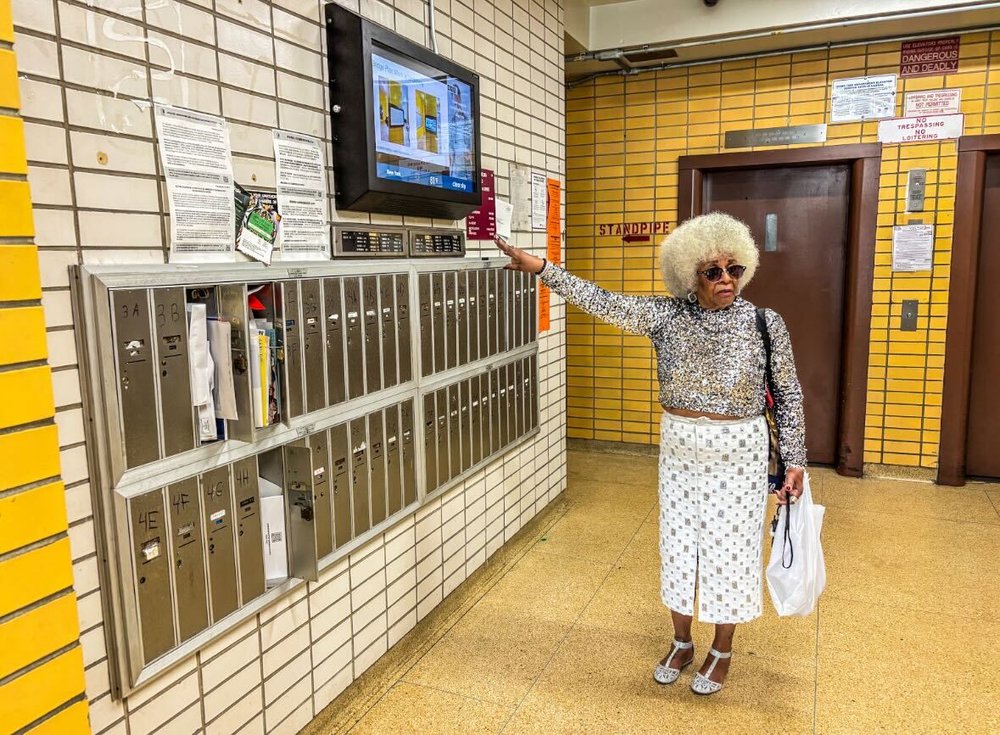
But the developers’ plans are already in motion. They’ve hired the company Housing Opportunities Unlimited, which specializes in relocating residents ahead of public housing demolitions or redevelopment. And Ana Hall, a spokesperson for the developer Essence, said 22 of the 82 households in Chelsea Addition have agreed to move so far.
Once the federal government signs off on an environmental review package for the project, potentially as early as this summer, tenants in the senior building will receive 90-day move-out notices. A spokesperson for the U.S. Department of Housing and Urban Development declined to give a timeline for approval, but said the agency supports the plan.
They are trying to get you out.
Elliott-Chelsea Houses Tenant Association President Renee Keitt
Essence’s CEO Jamar Adams, no relation to the mayor, said he wasn’t yet clear what would happen if residents refuse to move out. In a case like that, Housing Opportunities Unlimited spokesperson Chanie Infante said the company will abide by all requirements and regulations laid out by NYCHA and the U.S. Department of Housing and Urban Development. Residents who decline to leave could face a lengthy legal process under federal public housing rules.
The city’s housing authority and the developers hope it doesn’t get to that point.
‘Not a done deal’
Fulton Houses Tenant Association President Miguel Acevedo is a steadfast supporter of the redevelopment. The 65-year-old resident, who works as a facilities manager at Cooper Union, said the plan is an “incredible opportunity to choose housing that’s never been done before.” And he said there are many other residents like him.
If anything, he wants it to get underway faster.
“This thing should have already started and we would be halfway through,” he said.
But more fearful residents have found support in his counterpart, Renee Keitt, who won an upset election earlier this year to become the Elliott-Chelsea Houses Tenant Association president on an anti-demolition platform. She ousted longtime President Darlene Waters, a project supporter, by four votes in January.
In Keitt’s view, the city neglected residents until there was money to be made from the property their homes are sitting on. “It is the market value of Chelsea that has literally driven this process,” she told Gothamist. At a tenant meeting held by the developers last Thursday, she urged residents not to “self-evict” by participating in the voluntary moves.
“It's not a done deal,” Keitt told residents. “You should not leave. You need to stay in your home … They are trying to get you out. This is what this is about.”
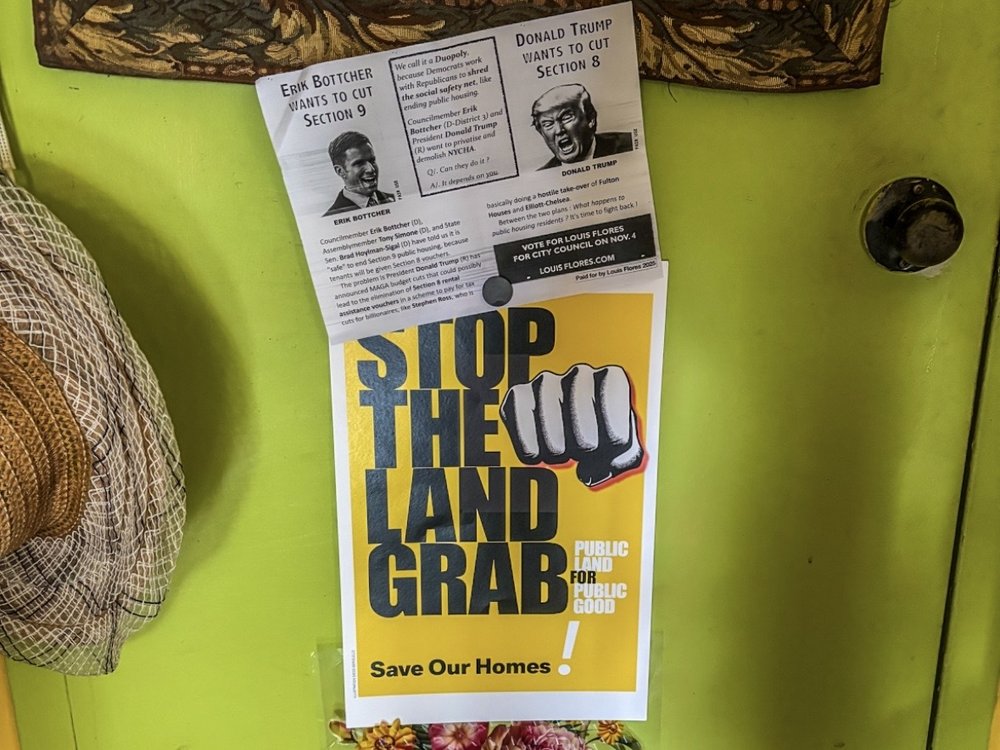
Mayor Adams and other city leaders say that a minority of residents share Keitt’s views. They point to a 2023 survey that NYCHA conducted about the future of the development. It showed that a majority of respondents would prefer new apartments. But Keitt and other opponents say the nonbinding survey was misleading because it did not mention demolition and the displacement of some residents, like those in Chelsea Addition and another building on the nearby Fulton Houses campus. They’ve countered with their own petition, which they say has more than 950 signatures from residents opposing the plan.
Keitt’s own election suggests that the city’s plan may not enjoy the kind of broad support that elected officials and the developers claim. Residents rejected a similar tear-down proposal and chose to instead turn renovations over to private firms in 2021 following an exhaustive community engagement process, only to have demolition revived two years later once the city and developers determined that the cost of repairs was too high.
As of now, NYCHA says the developers will complete the new building for senior residents by the end of 2028. The entire project has a 16-year timeline. But Keitt said she thinks the plan will morph into something less favorable for residents as costs rise with tariffs and inflation; as federal funding cuts threaten public housing and project financing; and as city leaders come and go.
“Everything keeps changing,” Keitt said.
NYCHA spokesperson Michael Horgan said the redevelopment plan “remains on track,” despite proposed federal budget cuts.
‘Stoked fear’
Jamar Adams, the Essence CEO, is a former safety in the NFL and executive at Related who has now become the public face of the Fulton and Elliott-Chelsea redevelopment project. He said he’s frequently heard concerns from tenants who don’t trust the plan or his company’s intentions. Others, he said, are scared to make the leap of faith.
“We've said it consistently: We're going to provide, for every family, a brand new apartment on this existing campus,” Jamar Adams told residents at the meeting to discuss project updates last week. He said they will pay the same amount of rent they are currently paying and will have access to new healthcare facilities and neighborhood amenities proposed as part of the project.
”The whole purpose of what we're trying to do here is to provide an elevated living experience for the residents of this community,” he added. “That is our goal. That is our purpose.”
Adams told Gothamist that some residents and activists have “stoked fear” among tenants by warning they may never be able to move into a new apartment.
“ Unfortunately, what's happening is there are opposition groups who are supporting messages that are actually factually untrue,” he said.
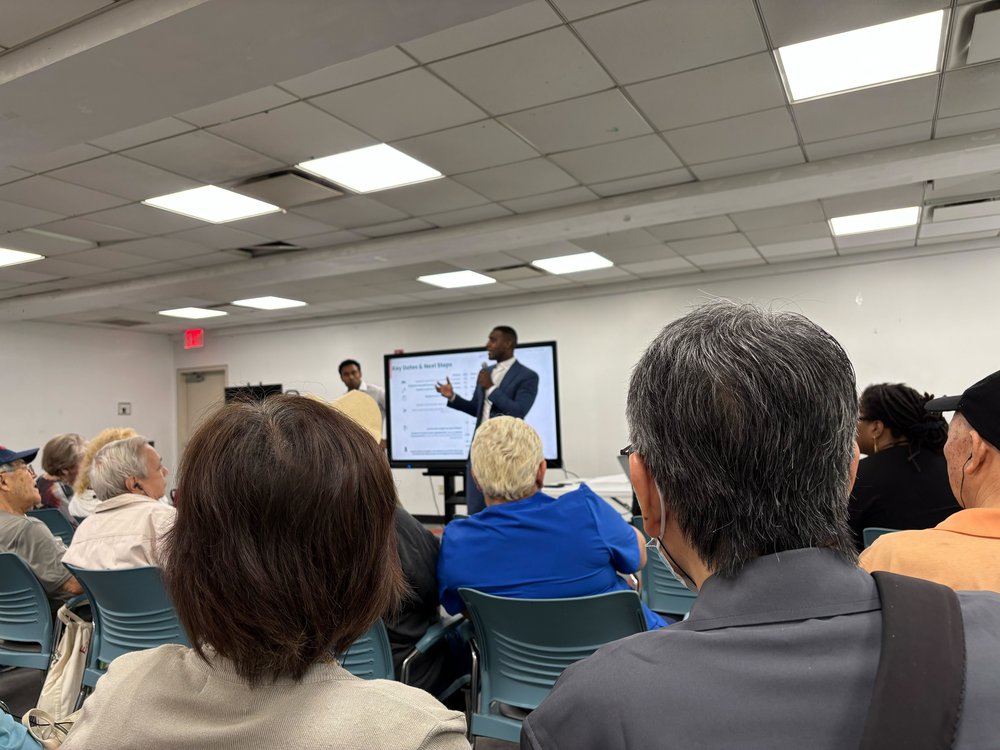
Where the leading NYC mayoral candidates stand:
The redevelopment project will stretch well into the next mayor’s term. So far, many of the candidates vying to oust Mayor Adams have come out in support of the plan or the concept of infill on NYCHA campuses.
Eric Adams – The mayor has spearheaded the plan and touted it as the future of public housing in the city.
Andrew Cuomo – The former governor would pursue more conversions of public housing to private management, and, potentially, additional demolition projects, according to his campaign spokesperson Esther Jensen and his NYCHA policy plan. Related Companies' Chair Stephen Ross contributed $50,000 to a super PAC supporting Cuomo’s candidacy, campaign finance records show.
Zohran Mamdani – The state assemblymember has pledged to build “new affordable, publicly controlled housing” on NYCHA land. But Andrew Epstein, a spokesperson for Mamdani’s campaign, declined to comment on the plan for the Fulton and Elliott-Chelsea houses.
Brad Lander – The city’s comptroller said at a forum hosted by news site City Limits in April that he would support similar infill proposals as long as a majority of tenants voted in favor of it.
Adrienne Adams – The City Council speaker did not respond to a request for comment. In her 2023 State of the City address, she proposed developing “new, higher-density buildings” on NYCHA land “that residents are moved into directly from their existing units.”
Scott Stringer – The former comptroller declined to comment on the plan specifically, but said at the City Limits forum that the city has to be “creative about our approach to finding new investment, especially when we're dealing with a federal government that is going to do everything it can to bring NYCHA down."
Zellnor Myrie — The state senator’s housing plan proposes constructing 95,000 units of mixed-income apartments on NYCHA campuses citywide without displacing existing residents.
Curtis Sliwa –
The Republican candidate opposes the redevelopment plan, arguing it will lead to displacement. He favors renovating the existing buildings and said his opponents' donors will benefit from the plan.